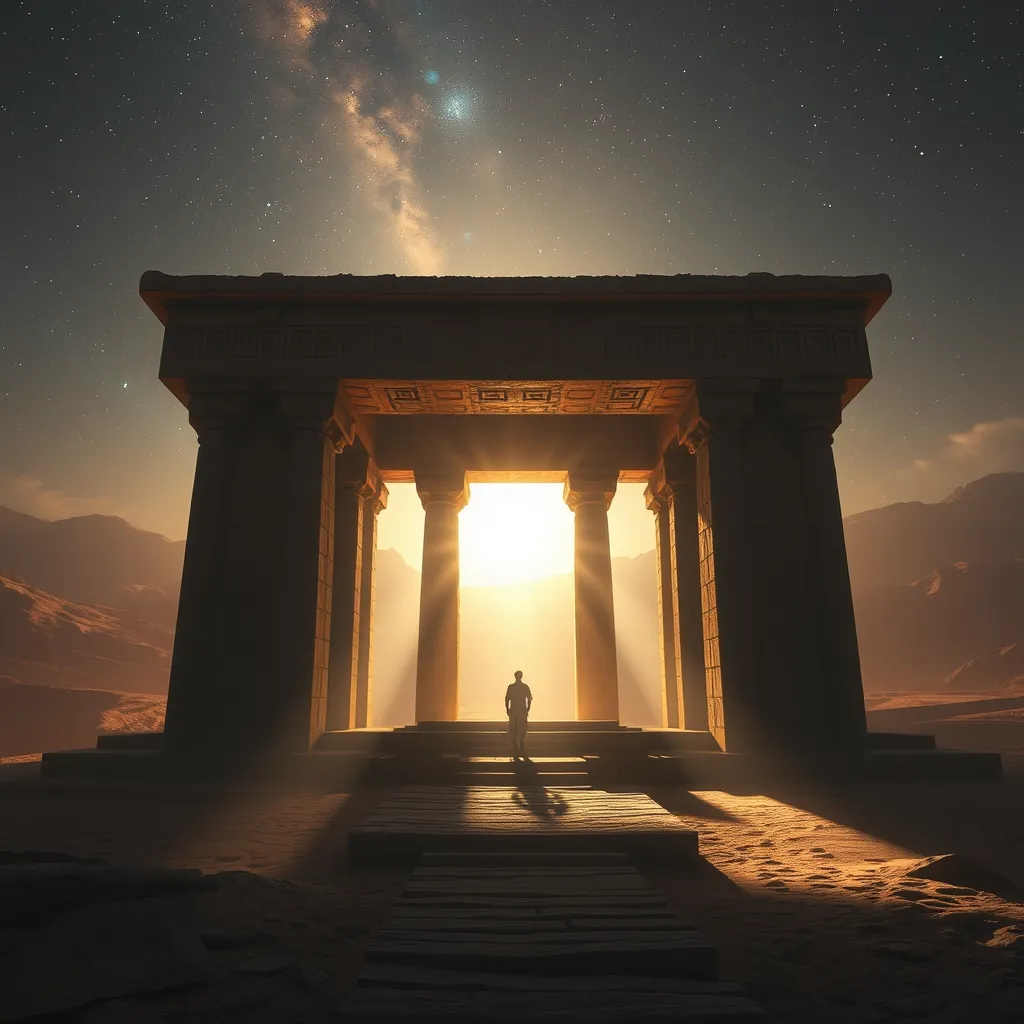The Duat: A Realm of Eternal Light and Shadows
I. Introduction
The Duat is a central concept in Ancient Egyptian belief, representing the realm of the afterlife where the souls of the deceased journey after death. This mystical landscape is characterized by a duality of light and shadow, embodying the complexities of existence and the eternal struggle between order and chaos.
Light and shadow hold significant meanings within the Duat; light symbolizes purity, life, and divine presence, while shadows evoke fear, chaos, and the unknown. Throughout this article, we will explore the historical context of the Duat, its geographical features, the deities associated with it, the journey souls undertake, and the symbolism that accompanies this enigmatic realm. We will also touch on the Duat’s influence on modern culture.
II. Historical Context of the Duat
The concept of the Duat has its origins in Ancient Egyptian mythology, dating back thousands of years. Initially, the Duat was seen as a vast, dark space that souls traversed after death, evolving over time into a more complex and structured environment.
As Ancient Egyptian beliefs developed, the representation of the Duat transformed, integrating various elements from other cultures and religions. This evolution reflects the changing perceptions of life, death, and the afterlife within Egyptian society.
In comparison to other ancient Near Eastern afterlife beliefs, the Duat stands out due to its rich mythology and intricate rituals. While many cultures envisioned a singular afterlife destination, the Duat was a multifaceted realm where souls faced trials and challenges before reaching their final resting place.
III. Geography of the Duat
The Duat is often depicted as a vast landscape filled with various geographical features, including rivers, fields, and mountains. Some key elements include:
- Rivers: The Duat is home to several rivers, including the River of Life, which symbolizes rebirth.
- Fields: The Field of Reeds is a paradise-like area where souls can find eternal peace.
- Mountains: Mountains represent barriers that souls must overcome during their journey.
Each location within the Duat holds symbolic significance, reflecting the duality of existence. For instance, the River of Life signifies the continuity of life, while dark, foreboding regions symbolize the trials and tribulations of the afterlife journey.
Natural elements play a crucial role in the journey through the Duat, as they serve as both obstacles and guides for souls navigating this complex realm.
IV. Deities and Entities of the Duat
Numerous deities and entities inhabit the Duat, playing vital roles in the afterlife journey. Some of the key deities associated with the Duat include:
A. Key Deities Associated with the Duat
- Osiris: Recognized as the ruler of the underworld, Osiris presides over the judgment of souls and the resurrection process.
- Anubis: Known as the guide of souls, Anubis helps the deceased navigate the Duat and ensures they are prepared for judgment.
In addition to these prominent figures, the Duat is populated by various spirits and creatures that serve as protectors or adversaries. These entities embody both light and shadow, representing the dual nature of existence in Ancient Egyptian cosmology.
V. The Journey through the Duat
The transition from life to the afterlife is a significant aspect of Ancient Egyptian belief. Upon death, the soul embarks on a journey through the Duat, facing numerous challenges and trials along the way.
Some of the notable aspects of this journey include:
- Challenges: Souls must confront various adversaries and obstacles, including mythical creatures that embody chaos and fear.
- Trials: The soul undergoes a series of trials to prove its worthiness for eternal life, often culminating in the weighing of the heart against the feather of Ma’at.
Rituals and spells play an essential role in navigating the Duat, providing guidance and protection for the deceased. These practices aim to prepare the soul for the challenges ahead and ensure a smooth transition into the afterlife.
VI. Symbolism of Light and Shadows
The duality of light and darkness is a fundamental theme in Egyptian cosmology, deeply embedded in the symbolism of the Duat. Light is often associated with:
- Life: Representing vitality and divine presence, light is a symbol of hope and renewal.
- Purity: In the context of the afterlife, light signifies the purity of the soul and its readiness for judgment.
Conversely, shadows evoke feelings of:
- Fear: The unknown aspects of the Duat can instill fear in souls, representing the potential for chaos and disorder.
- Chaos: Shadows symbolize the trials and tribulations that one must face in the journey through the afterlife.
This intricate interplay between light and darkness reflects the broader human experience, illustrating the balance of hope and fear, order and chaos in life.
VII. The Duat in Modern Culture
The Duat continues to captivate the imagination of artists, writers, and creators in modern culture. Its representations can be found in various forms:
- Literature: Many authors draw inspiration from Egyptian mythology, weaving the Duat into their narratives.
- Art: The imagery of the Duat has influenced countless artists, resulting in captivating depictions of its landscapes and deities.
- Popular Culture: Films, games, and television shows frequently reference the Duat, showcasing its enduring appeal.
This continuing fascination with Ancient Egyptian beliefs highlights the timeless relevance of the Duat and its teachings about life, death, and the journey beyond.
VIII. Conclusion
The Duat represents a complex and multifaceted understanding of life and death in Ancient Egyptian culture. Its enduring legacy offers insights into humanity’s quest for meaning and the mysteries of existence. The balance of light and shadow serves as a powerful metaphor for our experiences, reminding us of the dual nature of life.
As we reflect on the mystique of the Duat, we recognize its relevance today, encouraging us to explore the depths of our own existence and the eternal journey that lies beyond.




